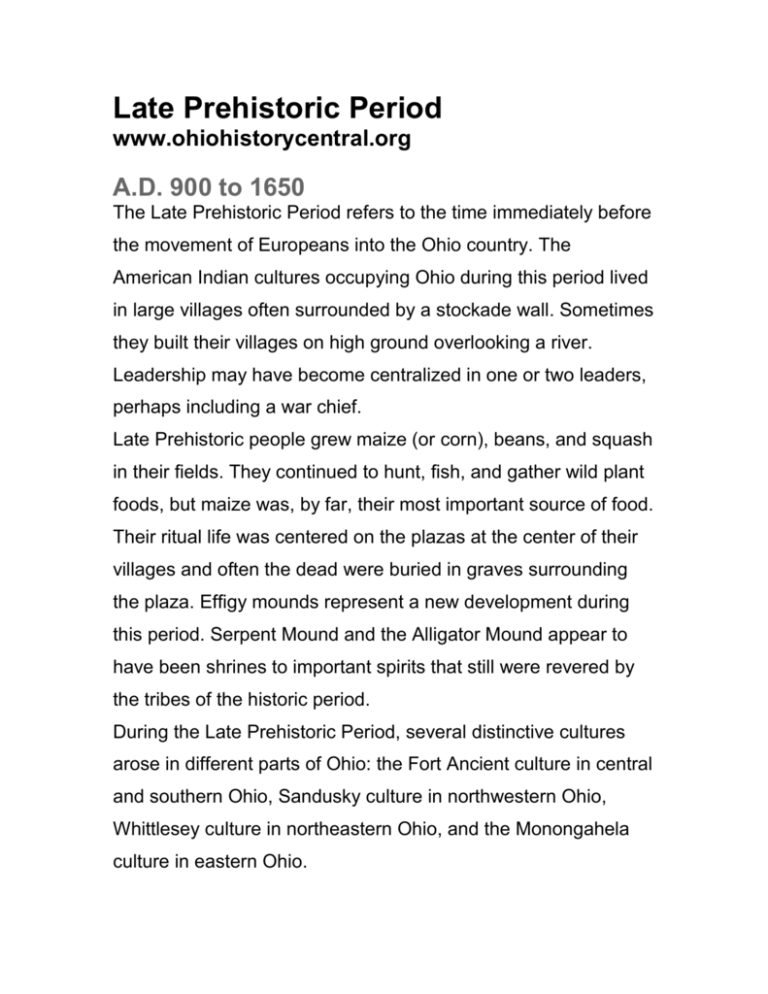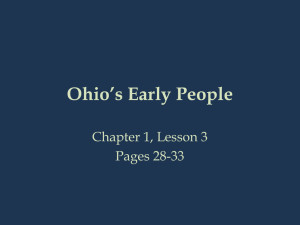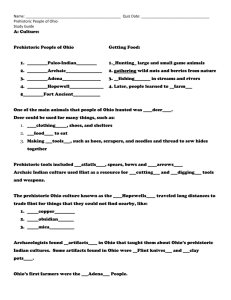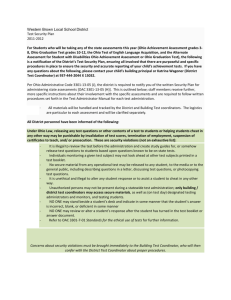Late Prehistoric Period
advertisement

Late Prehistoric Period www.ohiohistorycentral.org A.D. 900 to 1650 The Late Prehistoric Period refers to the time immediately before the movement of Europeans into the Ohio country. The American Indian cultures occupying Ohio during this period lived in large villages often surrounded by a stockade wall. Sometimes they built their villages on high ground overlooking a river. Leadership may have become centralized in one or two leaders, perhaps including a war chief. Late Prehistoric people grew maize (or corn), beans, and squash in their fields. They continued to hunt, fish, and gather wild plant foods, but maize was, by far, their most important source of food. Their ritual life was centered on the plazas at the center of their villages and often the dead were buried in graves surrounding the plaza. Effigy mounds represent a new development during this period. Serpent Mound and the Alligator Mound appear to have been shrines to important spirits that still were revered by the tribes of the historic period. During the Late Prehistoric Period, several distinctive cultures arose in different parts of Ohio: the Fort Ancient culture in central and southern Ohio, Sandusky culture in northwestern Ohio, Whittlesey culture in northeastern Ohio, and the Monongahela culture in eastern Ohio. The Late Prehistoric Period also is called the Mississippian Period. In the Mississippi Valley and in the Southeastern United States, large cites grew up during this time. The largest was Cahokia in Illinois. Perhaps similar large cities would have become established in Ohio, but the Beaver Wars and then the movement of Europeans into the region forever changed the lives of Ohio's American Indian peoples. Fort Ancient Culture A.D. 1000 to 1650 The Fort Ancient culture thrived in southern Ohio and northern Kentucky. Villages were made up of a number of circular or rectangular houses surrounding an open plaza. The Fort Ancient people continued to build small burial mounds, but gradually shifted to burials in a cemetery area with no mounds. There is evidence that the Fort Ancient culture built Serpent Mound in Adams County, Ohio. They also may have built the "Alligator" Mound of Licking County, but that effigy is not likely a sculpture of an alligator. It is more likely an effigy of a panther, opossum, or a salamander.







